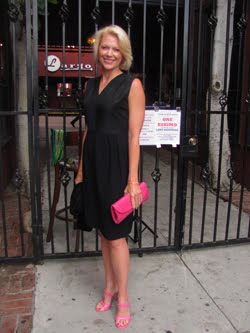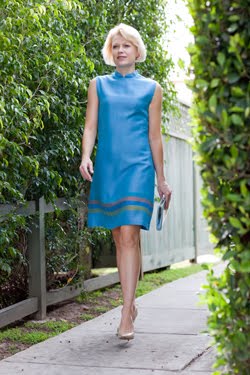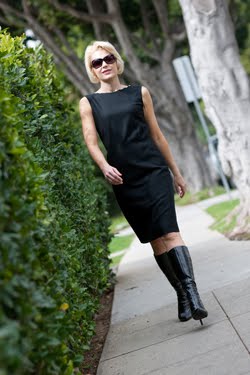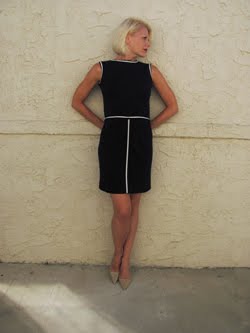When anyone first arrives in Los Angeles, Grauman's Chinese Theater is without a doubt on the short list of places to visit. The iconic theater and historical landmark is part of the pilgrimage for just about every tourist. And rightfully so.
Since 1927, the Chinese Theater has been the site of the biggest premieres in Hollywood. This history began with a director who considered himself the biggest of all time--Cecil B. DeMille--premiering the movie The King of Kings. From that point on, studios would vie to have their own premieres here. There was prestige in being photographed at the Chinese Theater and it has continued to be the location for the largest launches. Star Wars, for one, did its record-breaking opening weekend here in 1977. Even within the movies themselves, premieres are shown at Grauman's--think of Singing in the Rain. Most recently, I was thrilled to attend the premiere of the restoration of An American in Paris and celebrate the film's 60th anniversary at the theater during the TCM Classic Film Festival.
Many may not know, but Grauman's Chinese Theater was also the location of the Oscars for a few years. After outgrowing the Roosevelt, Biltmore, and Ambassador hotels, the Academy decided that the ceremony should switch to a theater from that point on. Of course the choice was obvious. The Chinese Theater was the most prestigious venue and so the Academy awarded Best Picture to Casablanca, Going my Way, and The Lost Weekend here in 1944, 1945, and 1946 respectively. Just think of who sat in those seats in 1944 alone. Mind blowing! Believe me, I had goosebumps most of the time I spent at the theater. It was an honor to even be a small part of its distinguished history.
The forecourt of the Chinese Theater is often more of an attraction than the theater itself. Though there are now some 200 handprints, footprints, and autographs of the most famous celebrities in the world, at one point it started with only three.
Douglas Fairbanks, along with Mary Pickford, was Sid Grauman's partner first in the Roosevelt Hotel and then partners in the Chinese Theater as well. On April 30, 1927, legend has it that Sid accidentally walked into some wet cement in front of the theater. He liked what he saw and asked Douglas and Mary to officially test their hand and footprints in the cement as well. So the tradition began, and incredibly its anniversary coincided with the very day that Peter O'Toole was immortalized there during the TCM festival. It also happened to be the first day that I had ever attended a movie inside the Chinese Theater.
Perhaps the most famous footprint ceremony at Grauman's Chinese Theater took place around the 1953 movie Gentlemen Prefer Blondes with Marilyn Monroe and Jane Russell. As with many things with Marilyn, this became an iconic moment. I love the summery little white dresses the ladies wore for the occasion, and of course their style influence continues. This is even evident by my own choice of dress when I first arrived at the TCM Classic Film Festival. I happen to be wearing an original 1950s white cotton and lace dress, and it shows how much the vintage styles from cinema can still look so modern today. Classic cinema...classic style.
The architecture and interior design of Grauman's Chinese Theater is itself a work of art with much of the structure coming straight from China. This was meant to be Sid Grauman's dream theater after building several others, such as the Egyptian (1922) on Hollywood Boulevard and the Million Dollar Theater (1917) downtown. It ended up being his two million dollar theater after receiving special permission from the government to import temple bells, pagodas, statues, and the Ming Heaven Dogs that still stand guard outside the front doors. As you can see, it's breathtaking both on the outside and inside.
Let's Go to the Movies!--1980s (1960s inspired) orange gabardine shift, 1960s ivory lizard handbag, 1960s ivory sequin cashmere cardigan, Sam Edelmen snakeskin mules, 1970s sterling silver bangle bracelet, six skinny gold bangle bracelets, silver hoop earrings
Though many consider Welles a genius and credit him for Citizen Kane, this was clearly an enormous collaborative effort. It had John Houseman as producer, with whom Welles had a creative and fulfilling partnership if not a bit on the volatile side. It also included the story and screenwriting talent of Herman Mankiewicz; Ben shared an incredible tale of the persecution his grandfather endured from Hearst in the courts and front pages after an auto accident. The movie also has the indispensable cinematography of the great Gregg Tolland, one of my personal favorites, and the supporting cast of the Mercury Theater players. The audience was so appreciative of the cast that people applauded every single name when it came on screen during the credits.
An early member of the Mercury Theater, Norman Lloyd visited with Ben Mankiewicz and the audience before the screening began. He discussed his experiences with former bosses Orson Welles and Alfred Hitchcock, comparing the differences between the two directors. He starred in Hitchcock's Saboteur, something of a precursor to North by Northwest, and professed him to be the master storyteller. Everything was combined so well in a Hitchcock film--suspense, romance, humor--and then carefully composed to make it look effortless. Of Welles, Lloyd said, there was much more of The Artist at work...an artist wanting to make dramatic statements with each story and shot. Though both are overflowing with talent, their visual styles are so different that you'll never confuse the two.
Next up for me was an equally iconic film...this time when it comes to style. With style being so obviously important to me, there was no way I was going to miss 1961's Breakfast at Tiffany's. Seeing the designs of Hubert de Givenchy, Pauline Trigere, and my beloved Edith Head on the big screen was a lesson in fashion I will always remember and treasure. The textures, colors, and details of every outfit just leaped off the screen. And Audrey herself was breathtaking on that scale. She was at once more beautiful than anyone you can imagine and also more human. Somehow being able to see her idiosyncracies in greater detail made Audrey even more charming. I walked away more enchanted with her than ever before.
Someone else who has always enchanted me is Julie Andrews, and she sat down with Robert Osborne to share insights on her husband, director Blake Edwards, with the audience. Feeling charged with protecting his legacy since his recent passing, Julie talked about the sheer amount of talent that Blake had. Very few filmmakers can cross the genres as he did, moving with ease from comedies to drama to musicals. Of course he always managed to infuse his pictures with some essence of comedy, saying that any story--no matter how difficult--could be told by using humor. And Julie added that by being an actor, both innately and professionally, it gave him a greater understanding of how to get the most out of his actors...largely by leaving them alone. The party scene in Breakfast at Tiffany's, for instance, was more about allowing the actors to drink and truly have a party than about any fancy direction. Now that's what I call method acting.
Rounding out my Saturday film fest was the 1960 foreign classic La Dolce Vita. Though technically shown at the Chinese Multiplex, I still consider it part of the Chinese Theater experience. Fellini's Italian masterpiece has been a significant part of my life. More than 20 years ago, I watched three movies during one hot sultry July weekend--La Dolce Vita, Rear Window, and Manhattan. First and foremost, the three films fueled an obsession with classic cinema that lasts to this day. But perhaps most importantly, La Dolce Vita and Rear Window rang a bell in me as far as how style should be. They are both so sophisticated and chic--one in a very European way and the other in a very American way--and what they share is timeless. It really resonated with me. I took lessons from them both and it is these movies that laid the foundation of my own personal style that ultimately resulted in the creation of GlamAmor. To now see La Dolce Vita at the TCM Classic Film Festival, I definitely experienced a full circle moment. You can see more of their style by looking at the links above.
Added bonus? Marcello Mastroianni has to be one of the most beautiful men in the world and you can't get much cooler than him in La Dolce Vita. Ciao bella!
Crowds gather outside Grauman's Chinese Theater on Hollywood Boulevard--filled with festival-goers and tourists alike
Once again back at the Roosevelt...what a day and ready for a little entertainment at Club TCM!






















































































































No comments:
Post a Comment